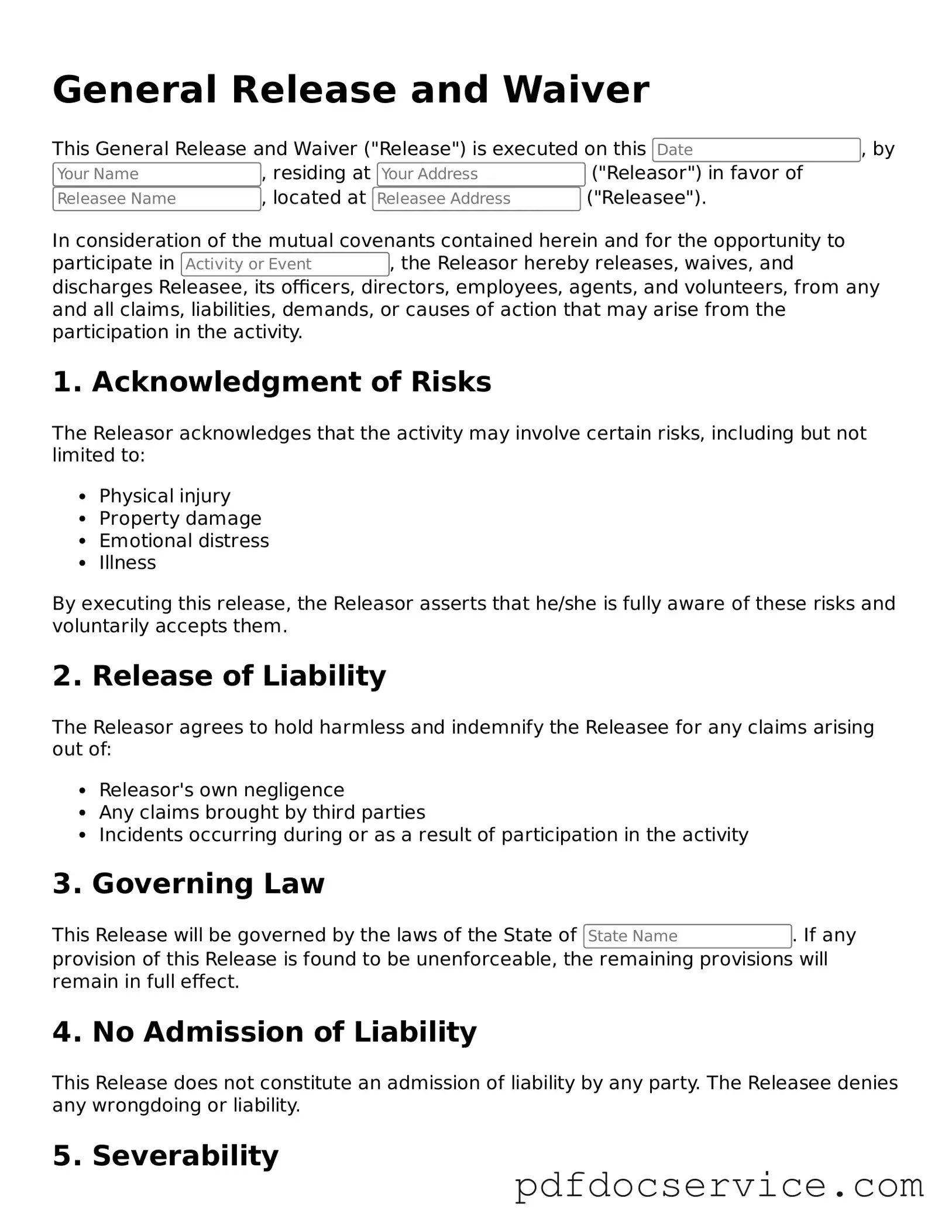Blank General Release and Waiver Form
The General Release and Waiver form is a legal document that allows an individual to relinquish their right to pursue any future claims against another party. By signing this form, individuals acknowledge that they understand the risks involved and agree not to hold the other party responsible for any potential issues that may arise. This form is commonly used in various situations, from event participation to settlement agreements.
Open General Release and Waiver Editor
